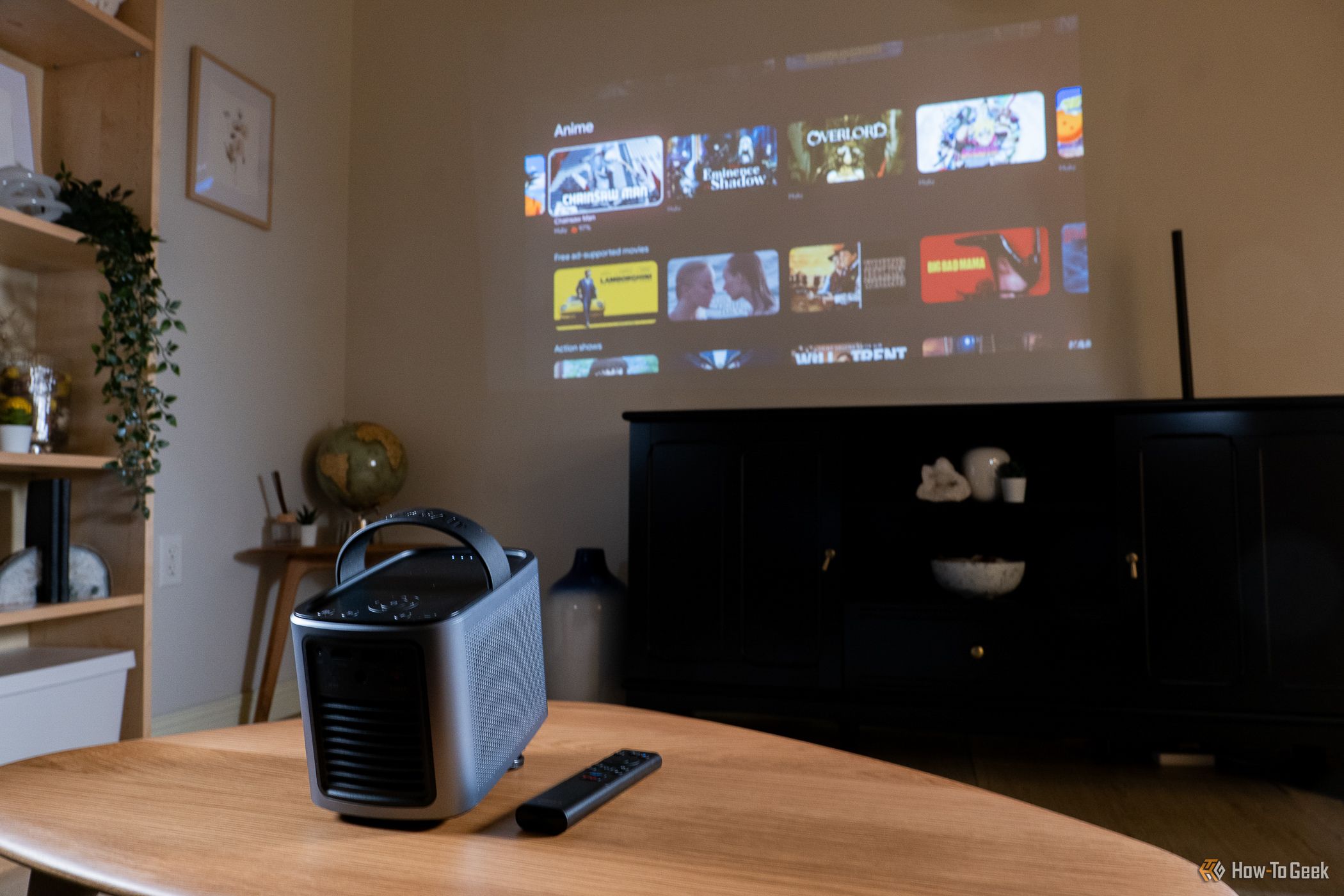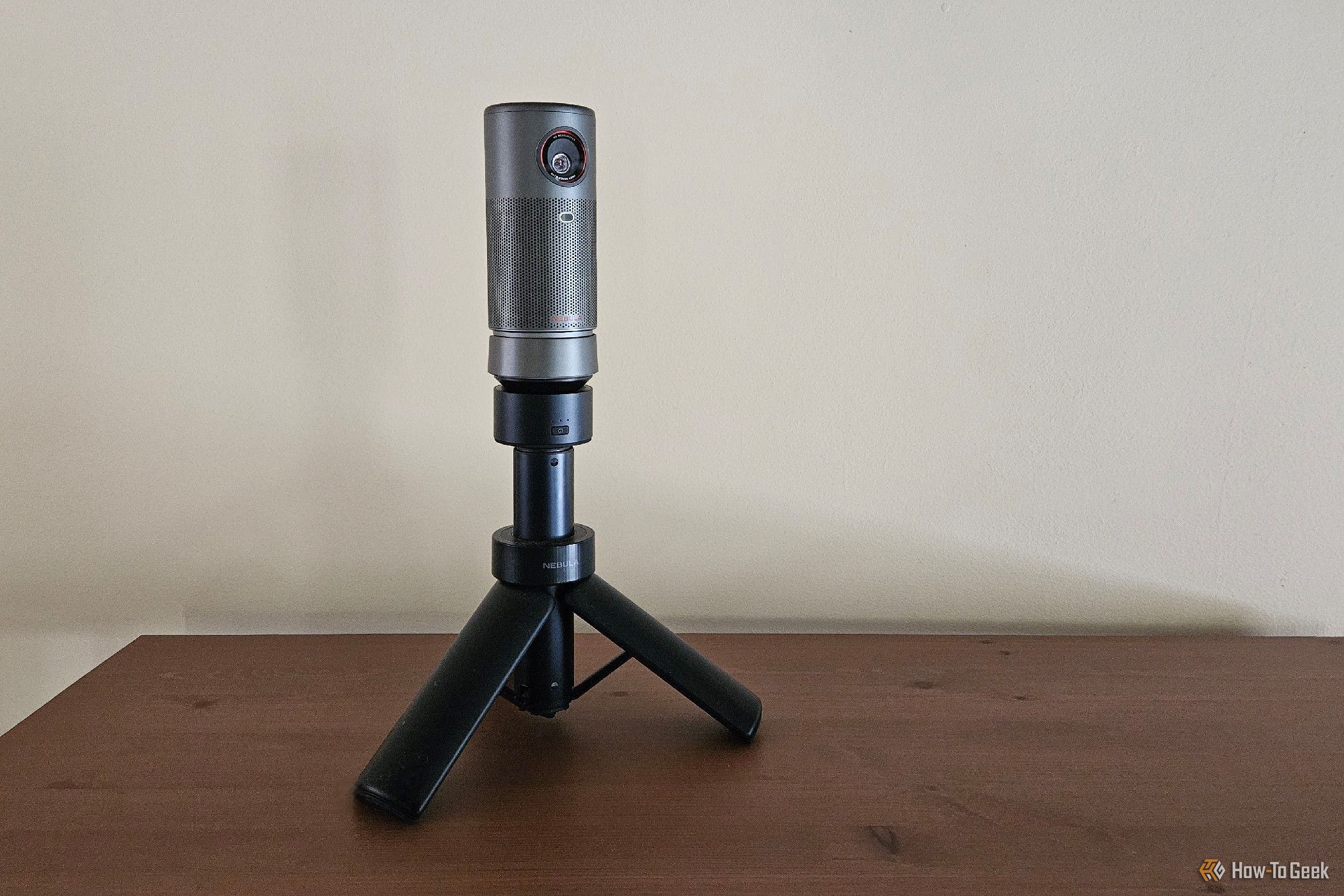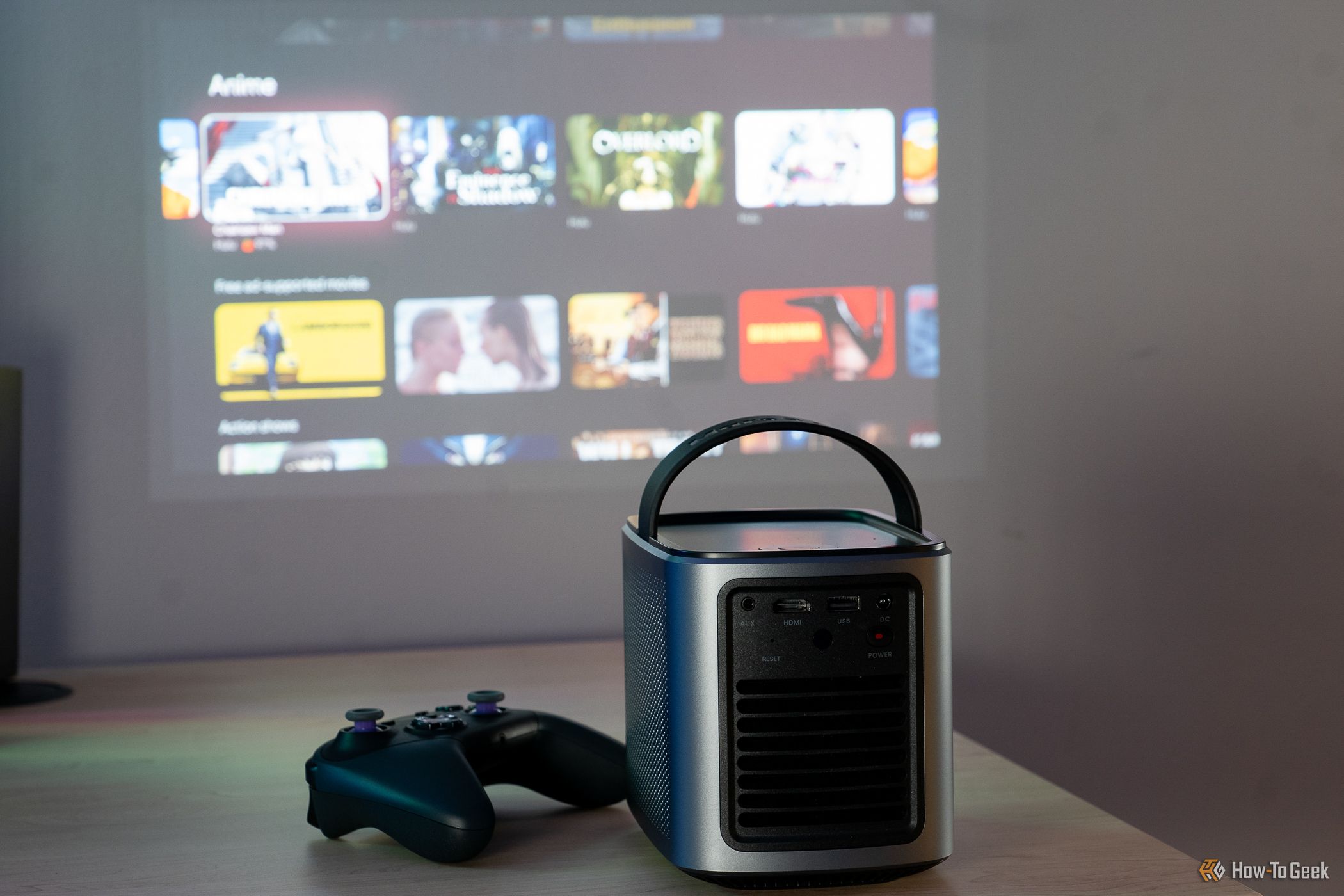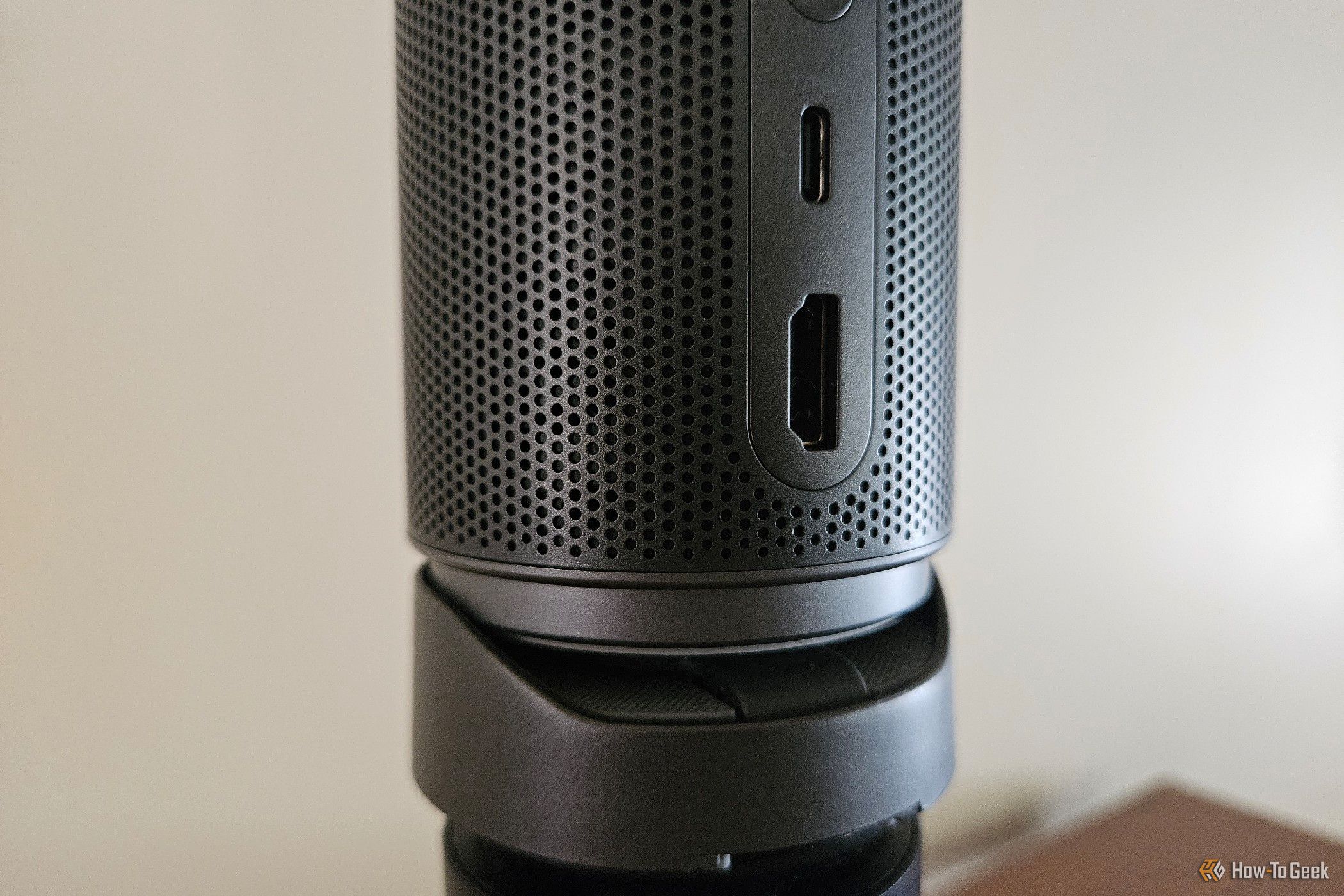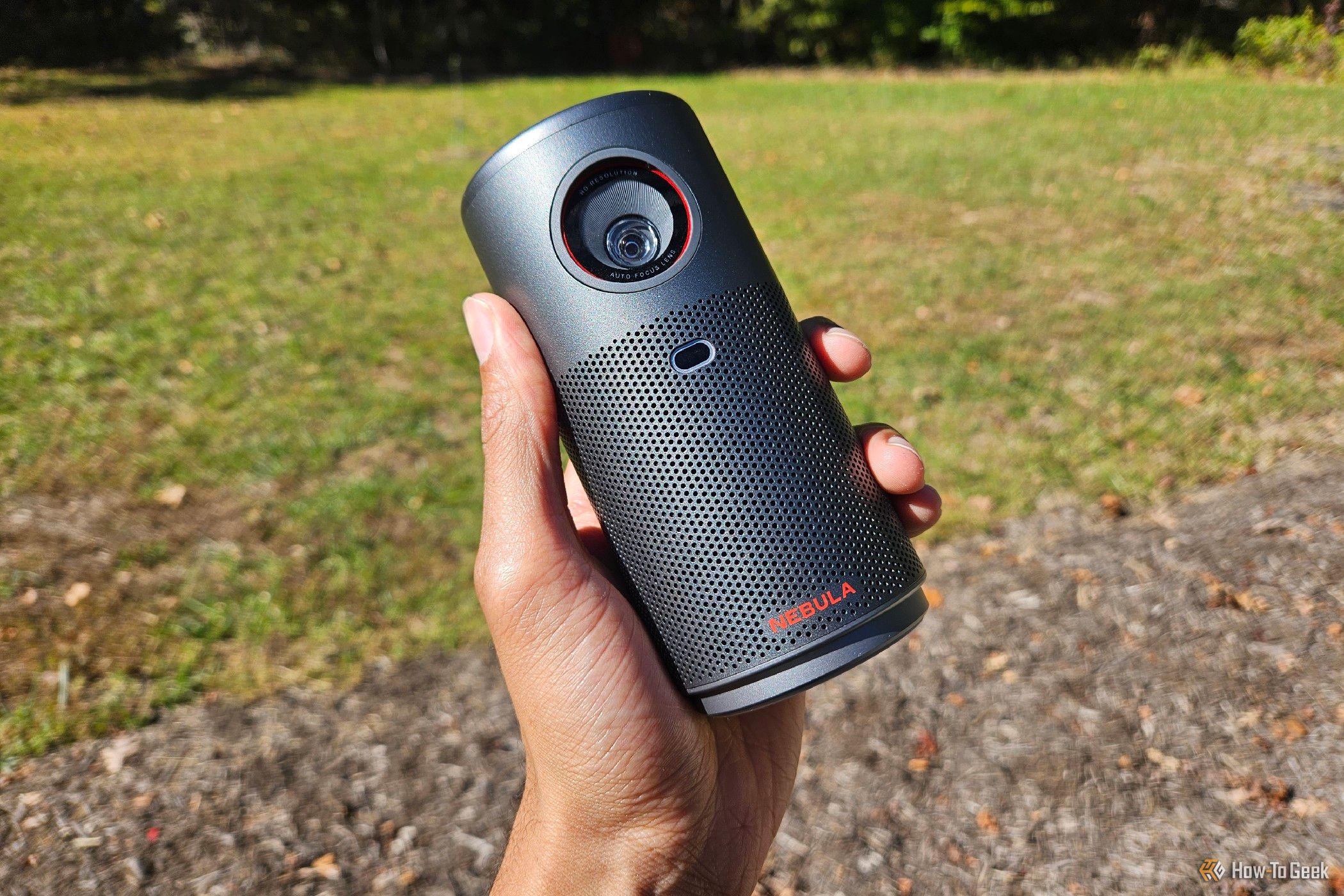My family has been without a TV for a long time, but there’s always been a small desire to have one for the occasional movie or binge session. Recently, we decided to go for a projector instead (a smart one, even), and we’re so glad we did!
Projectors Have Come a Long Way
Projectors have been around for a long time, but the technology has not stood still. You can now buy a projector that can handle 1080p or 4K video, no problem. You also don’t need to invest in a screen—a wall is fine. Nor do you need to hang a projector from the ceiling to get the exact right angle.
My projector, the Nebula Capsule Air (very similar to the Nebula Capsule 3), is about as simple as a projector gets. Thanks to autofocus, the projector will make sure the image is sharp and clear with no effort on our part. With auto keystone correction, the projector also senses what angle it’s facing the wall from and adjusts the image accordingly.
This means instead of the projector needing to be directly in front of the surface we’re projecting onto, we can have it 45 degrees off to the side. The projector will also adjust vertically, so instead of mounting the projector onto the ceiling, we can plop it on the floor and aim upward. The video will look the same.
The first time I saw this in action, it felt like magic.
Projectors Can Travel from Room to Room
Our projector looks like an Ultimate Ears Bluetooth speaker with a light bulb and sensor. It’s as easy to move around as any Bluetooth speaker, and it produces a similar sound. All of this means that, unlike a TV, it’s no hassle to move the projector from one room to the next.
With this one purchase, we now feel like we have multiple TVs in the house. Sure, we can’t all watch at the same time, but if we want to have movie night in the living room, we can. On a different day, my wife and I can enjoy the occasional large 100-inch movie in our bedroom without having to sacrifice a large area to a TV stand and a massive screen (one that would not be in use the vast majority of the time). When we’re entertaining other adults, we can set the same projector up in the kids’ room and let them enjoy a show.
If we wanted the best image quality, we could sacrifice portability for a heavy laser projector. For my family, that isn’t a sacrifice we want to make.
Some Projectors Behave Just Like Smart TVs
Our projector came with Google TV and a remote. We interact with the interface the same way we would any smart TV or streaming box, except the remote has to be aimed toward the projector instead of what we’re watching.
After signing in to all of our apps, it takes mere moments to start streaming. Yes, we have to aim our project at a wall first, but after that, using it is as quick and intuitive as using a TV. If we didn’t move our projector around so much, even that delay would go away.
Unfortunately, shipping Google TV means our projector comes with the same downsides as any other smart TV. The interface is very slow at times, and down the road, we can expect it to stop receiving updates. We still get hammered with “recommendations” that make it worth installing an alternative launcher for Google TV or enabling Apps Only Mode.
There’s Google Cast and HDMI Input
We can cast video wirelessly to our projector, which serves as another way to get around the limitations of a Smart TV interface. Even if the software does stop receiving updates, the projector will likely still function as a Cast receiver.
The projector also has the inputs for connecting a separate set-top box, though that does impact how mobile your projector can be. If you keep your projector largely in one spot, then the HDMI situation is similar to any other smart TV, perhaps just with fewer ports.
Few TVs Get This Big
There is something magical about using a projector. Our kids love watching a movie projected onto a portion of the wall in our living room that spends most of its time blank. Movie night feels like more of a special affair than simply turning on the television.
The video is able to get much larger than the average TV, too. Ours goes up to 100 inches. Some of the cheapest projectors can still manage 80. This is much larger than the TVs most of us have or even want.
A 100-inch projected image feels like a luxury. A 100-inch TV feels a bit excessive. The latter also requires a lot more space. Even if you’re in a small apartment and don’t have a free wall to work with, you can buy a projector screen to toss up briefly and then tuck away when you’re done.
Battery-Powered Projectors Work Outdoors
To really crank the special occasion up with a notch, you can take your projector outside. All you need is a portable projector screen or, in some cases, a clear exterior wall.
Invite friends over, roll out blankets, and have a memory that most of them will hold on to for a long time. Sure, this takes more effort than gathering in front of the TV, but it can be cheaper than trying to coordinate a group trip to the theater, especially if this becomes a routine. This is also an option you can whip out for community groups you’re involved in or serve as a way to spice up fundraisers.
My projector has a battery that lasts for up to two hours (four if you get the optional tripod with a built-in battery). That’s long enough to watch Avengers Endgame or a Lord of the Rings movie. If you’ve invested in a giant emergency battery like the EcoFlow Delta Pro 3, then you can turn that into a movie marathon.
Our projector isn’t perfect. It feels a bit underpowered, and it only goes up 720p. That said, while I wouldn’t want to buy a 720p TV these days, I find the image more acceptable from a projector. It suits us well enough for now, though the Nebula Mars 3 Air is a similar option that can handle 1080p if you think 720p just won’t cut it.
When the time does come for us to upgrade, we’re not eyeing the picture quality of the latest TVs. Our eyes are set only on projectors.

